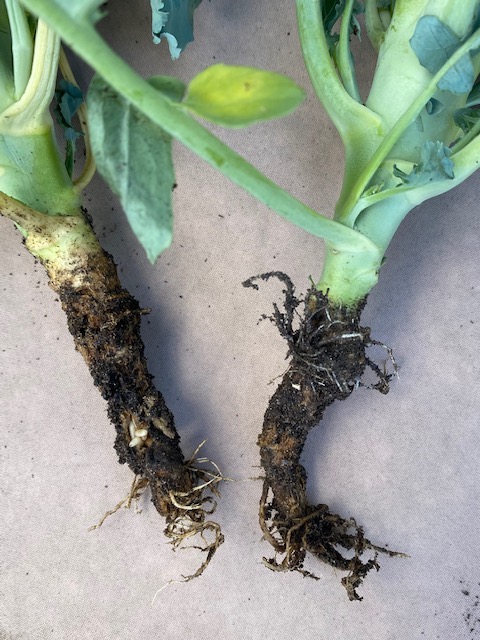
Root maggots
Damaging
Two species of root maggots (Delia radicum and Delia floralis) are a huge problem in brassica vegetables especially if you live in areas where canola is grown, which is an alternate host. Another species (Delia platura) infests corn, beans, peas, lettuce, carrots and cucumbers.
Grey-black flies emerge from the soil and lay eggs at the base of plants. The first round of egg-laying occurs from late May to early June. Shortly after eggs are laid, white maggots hatch and attack the roots of the young plants.
Brassica and other plants affected by root maggots will appear stunted and older leaves will turn yellow or purplish-red and then eventually die. Affected plants can easily be pulled out of the ground since the roots have been eaten off b
Do not use chemical insecticides to avoid killing natural predators of onion maggots which include: birds, nematodes, parasitic wasps, ground beetles and rove beetles.
Control:
- Always rotate plants – never plant in the same space for at least 3 years to avoid a buildup of this insect population.
- Cover plants with insect row cover to prevent the fly from laying its eggs. Note that this does not work if there are overwintering pupae in the soil in an area previously infested with root maggots.
- Clean up all plant debris in fall to remove the food source. Do not compost the debris.
- Diatomaceous earth may have some effect on reducing numbers but will not eradicate the problem.
- Till in fall to expose the overwintering pupae to cold and predators.
- Radishes have become especially difficult to grow due to maggot problems. Try growing radishes and other brassica crops in containers with new soil-less mix each year.
Source:
Philip, H. G. (2018). Field crop and forage pests and their natural enemies in Western Canada: Identification and management. Saskatoon, Saskatchewan: Agriculture and Agri-Food Canada.

